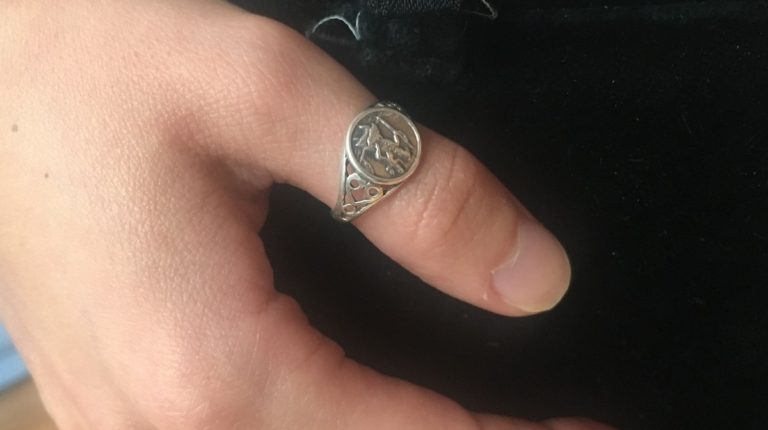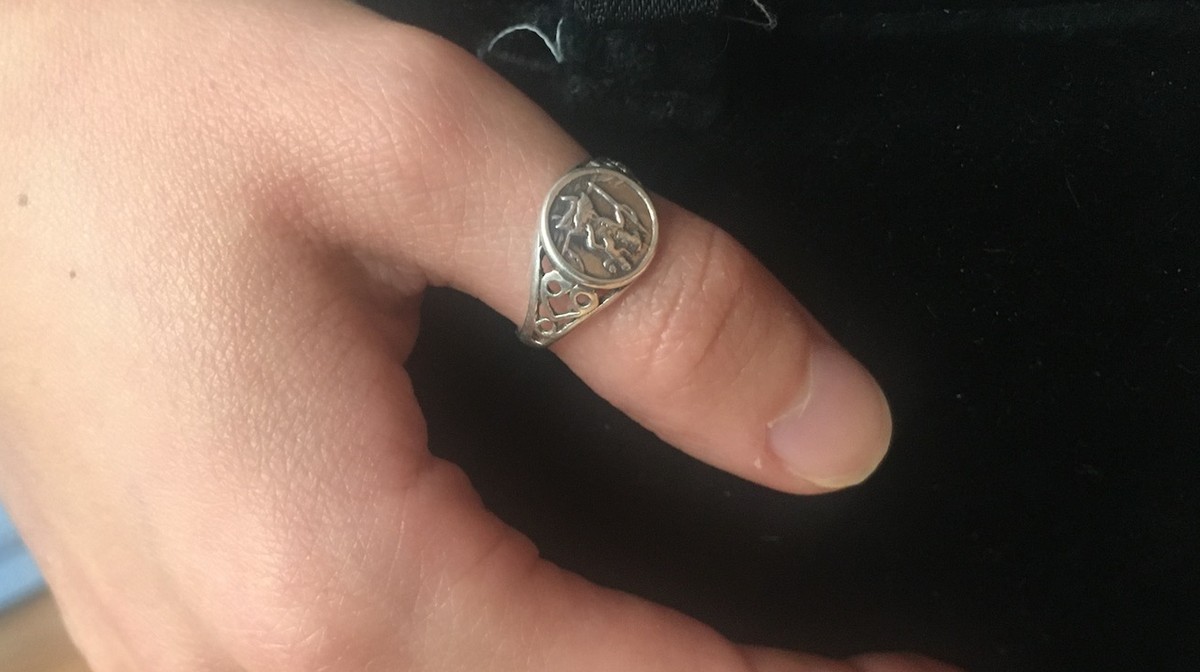

Nobody knows how old thumb rings are, but everyone is in agreement that they’re… really, really old. Older-than-Christ-old. Some of the oldest thumb rings were found buried in ancient tombs near Hancheng, along the Yellow River in China, and are dated to 800 BC. But they’re just the thumb rings which have survived. Thumb rings made of leather – which disintegrates – were likely made as far back as the Neolithic period, which was 12,000 years ago. So yeah, thumb rings = very old.
Advertisement
Thumb rings haven’t always been a fashion item. In fact, for a long time, they were intended as protection attire for archers, so their thumb pads didn’t get worn down by the bow string. Their history, then, lies in practicality, in hands, in doing, but also in vibe . So it should come as no surprise that, in more recent years, the thumb ring has been widely adopted by lesbians and queer women. I’m actually wearing a thumb ring right now. So is Jaqueline Wilson, I imagine.
Much like the plain vest, the thumb ring has become a sort of ubiquitous queer symbol. As a piece of jewellery, it sits neither at the traditionally “feminine” nor “masculine” end of the spectrum. It is casual yet delicate. Vaguely practical, and faintly erotic. By wearing a thumb ring, you’re saying, “I like my hands to look pretty, yes, but I also know how to use them.” Someone who wears a thumb ring can probably fix a lawnmower or construct a bed, but they’ll also read poetry and look after their plants properly. What could be more lesbian than that?
A lot of lesbian and bi women I speak to can’t pinpoint when or why the thumb ring became a queer signifier. “I remember seeing Villanelle in Killing Eve wear a thumb ring, and absentmindedly thinking, ‘Oh, very smart – that must be because her character’s queer.’ It felt like a wink to the queers,” says 25-year-old lesbian, Grace. “I can’t put into words why it’s specifically a queer look. It’s kind of like a word-of-mouth folk tale, but visual. Just one of those things that gets passed on from lesbian to lesbian, until the thumb ring itself becomes inherently lesbian, or queer.”
Advertisement
“I often find thumb rings on women quite attractive,” says 27-year-old pansexual, Zoe. “Maybe because it’s a bit butch, in a subtle way. I think minimal jewellery is definitely a queer thing for women. Like, just one or two ‘statement pieces’. One dangly earring or one simple necklace is quite queer, too. It could be because all of these things straddle the butch / femme divide.”
Danielle Goldman, a stylist who has worked with everyone from Brooke Candy to Happy Meal Ltd and Aja from RuPaul’s Drag Race, agrees that thumb rings hold a certain prominence when it comes to queer women’s style.
“There’s a specific sex appeal that comes with queer women wearing thumb rings that is hard to describe or pinpoint,” she says. “To me, the thumb ring seems like the ultimate anti-ornamental piece – it’s a symbol of defiance and non-compliance with the normative femme expression of wearing a ‘decorative’ or ‘pretty’ ring on any of the more usually bejewelled fingers. It’s negating the idea of performing for the male gaze. There is something very sexy about that.”
Obviously you can’t really tell someone’s sexuality based on what they’re wearing – straight people wear thumb rings, too! Gay men definitely do. Plus, the necessity for coded signifiers (see: the handkerchief code) has gradually waned since the late 1960s and 1970s, when homosexuality began to become more accepted. Still, the thumb ring has a semi-coded history, too – it’s just that nobody’s quite sure which thumb means what. According to an entry on Urban Dictionary, “If a woman wears a thumb ring on her right thumb, she is considered to be bisexual or lesbian.” Others claim that the hand you wear your thumb ring on indicates whether you’re queer and single or in a relationship.
Either way, we can all agree that the thumb ring is very gay.
Right now – at a time when fashion is becoming increasingly gender-neutral, and when younger generations don’t always feel the need to attach fixed labels to their gender or sexuality – stylistic markers are becoming a little less common, greyer and harder to define. Which is a good thing. We needn’t be defined by what we’re wearing, or who we’re sleeping with, or how those two things may or may not interact.
Even so, none of this negates the need for queer expression, even in 2020. And if that expression happens to look like an extremely queer thumb ring, so be it. Also, if your thumb ring is also a mood ring, that means you’re a lesbian times-two. I don’t make the rules.